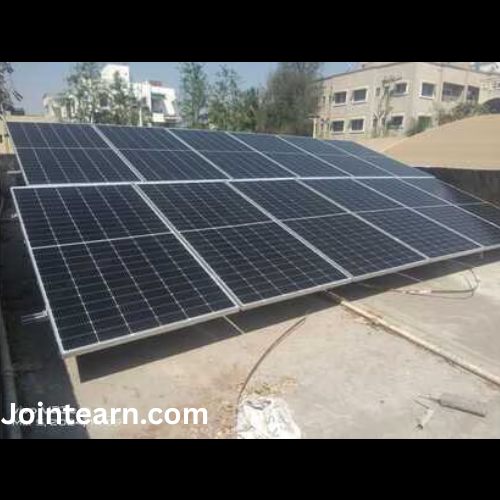New Delhi: The real-world impact of the United States’ massive tariffs on Indian goods is becoming increasingly visible, even as talks for a potential trade deal between India and the US continue. Despite the publicly displayed camaraderie between President Donald Trump and Prime Minister Narendra Modi, data reveals that Indian exporters are facing significant setbacks, with sectors across the board showing sharp declines due to punitive US tariffs.
According to an analysis by the Global Trade Research Initiative (GTRI), an India-based trade think tank, India’s exports to the United States fell for the fourth consecutive month between May and September 2025, registering a 37.5% contraction in absolute value. Export revenue during this period fell from $8.8 billion in May to $5.5 billion in September, marking one of the steepest short-term declines for India’s trade with the US in recent years.
The tariffs, GTRI noted, have not only squeezed trade margins but also exposed structural vulnerabilities across key export industries. This has intensified concerns among policymakers, exporters, and trade experts, who warn that without immediate intervention, India risks losing its foothold in the US market to competitors such as Vietnam, Mexico, and China.
Tariff Timeline and Rationale
The imposition of tariffs began at the start of the 2025 fiscal year, initially set at 10%. However, the rates escalated sharply in August, reaching a cumulative 50%. The first 25% increase came in early August, followed by an additional 25% “penalty” imposed on Indian imports due to continued purchases of Russian oil, despite the ongoing conflict between Russia and Ukraine.
GTRI analyzed export performance during the May-September period to assess the immediate fallout of these tariff measures. The results were sobering: nearly all sectors recorded declines, with labor-intensive industries—textiles, gems and jewellery, chemicals, agricultural products, food items, and machinery—particularly affected. These sectors, which account for approximately 60% of India’s US exports, suffered a 33% decline, falling from $4.8 billion in May to $3.2 billion in September.
Tariff-Free Products Hit Hardest
Interestingly, products that were technically tariff-free, comprising nearly one-third of India’s total shipments to the US, also saw the steepest contraction. Their export value dropped 47%, from $3.4 billion in May to $1.8 billion in September. Within this segment, smartphones and pharmaceuticals emerged as the most affected categories.
Smartphone exports, which had surged dramatically in April-September 2024—registering a 197% growth—plummeted in the same period in 2025. Export values fell sequentially from $2 billion in June to $1.52 billion in July, $964.8 million in August, and finally $884.6 million in September. GTRI noted that the precise reasons for this decline remain unclear and warrant further investigation.
Pharmaceutical exports also experienced a 15.7% dip, signaling that even high-value, relatively resilient sectors are not immune to the ripple effects of US tariffs. Meanwhile, industrial metals and auto parts, which face uniform tariffs for all exporting countries, witnessed a comparatively moderate decline of 16.7%.
Sectoral Impact
The GTRI analysis highlighted the uneven impact of tariffs across key sectors:
- Aluminium exports fell 37%,
- Copper exports dropped 25%,
- Auto parts declined 12%, and
- Iron and steel fell 8%.
Among these, the gems and jewellery sector was hardest hit, with exports collapsing 59.5%, from $500.2 million in May to just $202.8 million in September. This downturn severely affected key production hubs such as Surat and Mumbai, while countries like Thailand and Vietnam absorbed much of the lost US demand.
Similarly, India’s exports of solar panels, a key renewable-energy product, fell 60.8%, from $202.6 million to $79.4 million. GTRI pointed out that these declines are particularly concerning given that China faced only 30% tariffs and Vietnam 20% during the same period, giving competitors a distinct advantage over Indian exporters.
Structural Vulnerabilities
The sharp decline in exports, according to GTRI, underscores systemic weaknesses in India’s export ecosystem. While tariffs have amplified short-term revenue losses, they have also revealed structural vulnerabilities in production efficiency, supply chain resilience, and international competitiveness. For many small and medium-sized enterprises (SMEs), the sudden imposition of high tariffs has left them financially exposed, with limited capacity to absorb additional costs or shift to alternative markets.
GTRI emphasized that the current scenario highlights the need for urgent government intervention. Exporters are reportedly urging the Indian government to provide emergency credit lines for MSMEs, as well as to explore strategic measures that could mitigate the impact of US tariffs. Without such measures, India risks losing long-standing market share in sectors where it previously held a competitive edge.
Strategic Implications
The GTRI report also points to broader implications for India’s trade strategy. With tariffs reducing export competitiveness, Indian manufacturers face not only immediate revenue losses but also long-term risks to global market positioning. Vietnam, Mexico, and China, all operating under lower tariffs, are increasingly capturing US demand for goods that were traditionally sourced from India.
The analysis concluded that while trade talks between India and the US continue, and while diplomatic optics remain positive, real-world consequences of the tariffs are already manifest. “The latest data make one point clear: tariffs have not only squeezed India’s trade margins but also exposed structural vulnerabilities across key export industries,” GTRI wrote.
Trade Talks and the Path Forward
India maintains that trade negotiations are in the final stages, and the US claims that India has agreed to scale down purchases of Russian oil. However, Delhi has neither confirmed nor denied these assertions. Meanwhile, exporters remain anxious, calling for swift policy responses to prevent permanent market losses and ensure the resilience of India’s export sector.
Analysts believe that policy interventions may include:
- Emergency financial support for affected exporters, particularly MSMEs,
- Diversification of export destinations to reduce dependency on a single market,
- Strengthening supply chain efficiency to absorb tariff shocks, and
- Sector-specific incentives to maintain competitiveness in key labor-intensive and high-value industries.
As India navigates this challenging landscape, the trade downturn serves as a cautionary tale about overreliance on a single market and the importance of structural reforms to enhance export resilience. While the bilateral relationship with the US remains strategically important, the ongoing tariffs highlight the immediate need for both policy agility and industrial competitiveness.
In conclusion, India’s trade with the US has entered a critical phase. The combination of punitive tariffs, structural vulnerabilities, and aggressive competitors in the region has created a perfect storm for Indian exporters. Without swift and targeted government action, the country risks losing hard-earned market share, particularly in sectors where it previously enjoyed a dominant position. The GTRI analysis makes it clear: tariffs are not just a temporary inconvenience—they are a structural stress test for India’s export ecosystem.


Leave a Reply